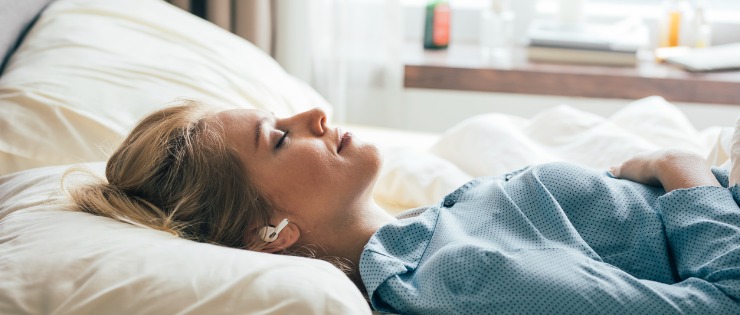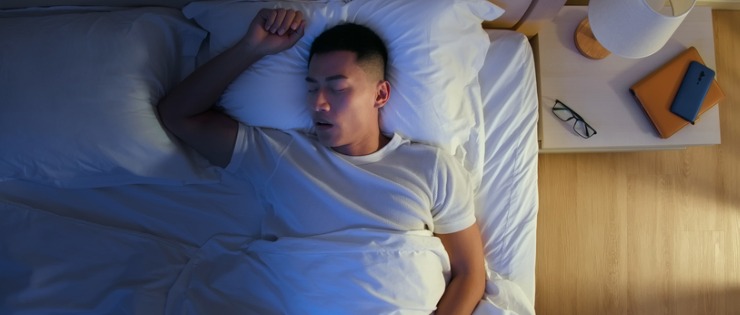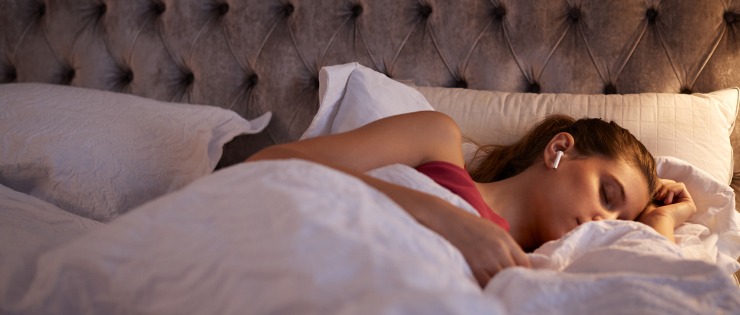
Who knew sleep noise could be so colourful? If you suffer from insomnia or any other sleep disturbance, you’ll try anything to get a good night’s rest including playing a range of different sounds, right?
Sleep noise isn’t new. White noise machines have been around since the 1960s helping people fall asleep and stay asleep. And now, with online video clips and apps playing sleeping sounds and music largely available, more people are giving sleep noise a go.
The Sounds of Sleep Noise
Most of us have heard of white noise but what’s pink noise vs white noise? And where does brown noise come into the picture?
White, pink, and brown noise are all types of background noise that make it easier for people to fall asleep and stay asleep. It’s not fully known why the colours white, pink, and brown were chosen. However, the different sounds represent different frequencies of sound.
What is Pink Noise?
Pink noise for sleep is played in the background to drown out other sounds that may make sleep difficult. Pink noise is a milder version of white noise. It’s considered to be more pleasant to listen to for long periods than white or brown noise. Some have described pink noise as an even or flat noise.
Pink noise sometimes mimics the sounds of nature such as falling rain, the wind, or leaves rustling together.
What is White Noise?
White noise is an equal combination of high and low frequencies. Most people have heard of white noise as a soother for helping a puppy or baby fall asleep. White noise is used to mask sound, improve sleep, and for relaxation and concentration. White noise can also help some people who suffer from tinnitus.
White noise sounds like radio or TV static. Some people turn on a fan or the air conditioner in their bedroom, more because of the noise it creates than to change the air temperature.
What is Brown Noise?
Brown noise is high energy at low frequencies but includes all frequencies that the human ear can detect. While brown noise is deeper than white noise, it’s similar sounding to white noise.
Brown noise has been described as a hum or rhythmic sound. It’s less of a hissing sound than white noise has. Examples of brown noise include the engine of a plane, heavy rain, or the crashing of waves or a large waterfall.
Other Sleep Noises
While pink, white, and brown noise are the most well known, there are other less common sleep noises. Grey is said to be similar to white noise but not as harsh. Violet noise has a higher frequency than brown so it’s more like a hissing sound. Brown noise has also been referred to as red noise. Last, black noise describes the lack of noise or mostly silence with random bits of noise.

Which Sleep Noise is Best?
Faced with plenty of choices when it comes to sleep noise, people often wonder which one will work best for them.
White Noise
The most suitable type of noise will depend on the situation and the person. White noise is ideal for babies because it masks sharp noises. An older sibling dropping a toy or their bottom lip can be enough to wake up their baby brother or sister. White noise means any jarring noises are muffled. Adults can also benefit from white noise. A noisy neighbour or a shift worker trying to sleep during the day can use white noise to ensure no loud, sudden noise enters their bedroom and interrupts their sleep.
Pink Noise
Pink noise is thought to address people’s mental health. A small study found that pink noise reduces someone’s brain waves providing stable sleep, but more research is needed to confirm these findings.
Brown Noise
Brown noise is thought to help people focus better, as the harsh high frequency notes are turned down. Brown noise is easier to listen to than white noise which can be harsh and distracting. Some people with ADHD feel brown noise helps them block out other noises. But some tinnitus sufferers have reported brown noise makes their symptoms worse.
Benefits of Sleep Noise
Different people claim they gain a range of benefits from sleep noise.
Helps you fall asleep
Some use sleep noises to help them fall asleep. It may help blocking out any noise that can disrupt them from falling asleep.
Help you stay asleep
For others, the main benefit from sleep noise is staying asleep throughout the night by blocking out disruptive noises.
Calming for people with ADHD
Studies have been conducted on the therapeutic benefit of sleep noise for people with Attention Deficit Hyperactivity Disorder (ADHD). The research shows that white noise may improve the symptoms of ADHD and that white noise therapy could improve speech, reading, and writing speed.
Trains the brain
For others, sleep noise acts as a signal calling it’s time to sleep. The brain becomes used to the specific sound, so when it recognizes the sleep noise, it knows it’s time to calm down and fall asleep.
Placebo effect
Some researchers and people who use sleep noise believe the noise has a placebo effect. They say it doesn’t block out noise or have a calming effect, but when the user believes the noise helps them sleep, it does.
How Can You Hear the Sleep Sounds?
There are sleep noise machines available on the market that play sounds. There are also thousands of YouTube videos ranging from 10 minutes to 12 hours long, viewed millions of times and widely available. People also create Spotify playlists with all sorts of sleep noises for others to tap into.
You no longer need to invest in a noise machine with the specific noises you’re wanting to try. Trialling sleep noise is as easy as searching for a YouTube clip and clicking play, or by downloading an app such as NoiseZ or Noisli to play the sound recordings. Some prefer to play the noise in their room while others prefer to use headphones or earbuds while they sleep.

Professional Help for Sleep
If you are consulting a healthcare professional about your sleep, ask about the possibility of being referred to a sleep specialist who may be able to organise an at-home sleep study. Certain hospital cover policies will cover your visit to a sleep specialist. Take a look at your options today and get your sleep cycle sorted! The benefits are endless!